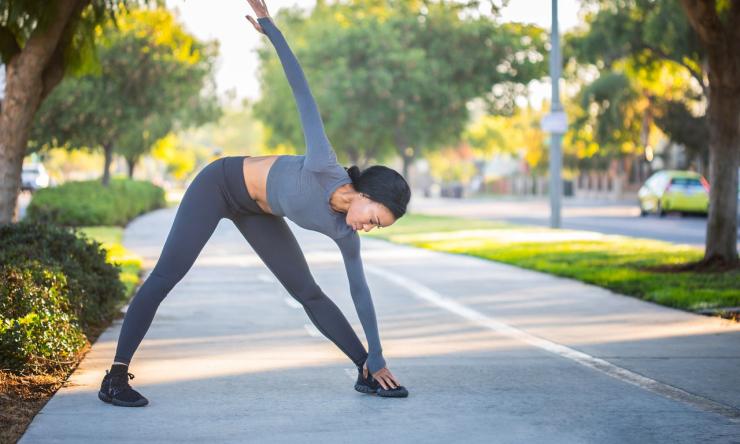Beat the heat: tips for outdoor summer workouts
As summer temperatures continue to rise, taking heat precautions becomes increasingly crucial, especially if you exercise outdoors. A Baylor College of Medicine physical therapist discusses how to assess your outdoor workouts this summer.
“If you plan to exercise in the heat, know your fitness level, take frequent breaks, wear proper clothing, wear sunscreen, avoid hottest times of the day and hydrate, hydrate, hydrate,” said Melanie McNeal, physical and occupational therapy manager in the Joseph Barnhart Department of Orthopedic Surgery at Baylor.
If you do not normally exercise in the heat or are starting to exercise in the heat for the first time, be very cautious as you will have a lower tolerance to the heat. Start slow and avoid extreme exercise intensities. Remember to take frequent breaks to hydrate. Work out early in the morning or in the evening to avoid the hottest times of the day.
Precautions
McNeal recommends overpreparing for your workout by bringing more water than you expect to use. If your workout is an hour long, she suggests having at least 40 to 60 ounces of water on hand. Depending on your sweat level, you might need more. A cooling towel also helps decrease body temperature and can be used throughout your workout to prevent heat illness. Place it behind the neck, under the arms and on the forehead for maximum benefit.
Lightweight, light-colored, sweat-wicking clothing is best to wear while exercising in warm temperatures. Dark colors and heavy material will exacerbate sweating. Wear sunscreen and avoid working out in the heat if you have a sunburn, since sunburns prevent the body from cooling itself.
Sports and hydration
The most dehydrating sports are those performed in the heat with heavy equipment on, such as football, or those in which you are non-stop moving, such as soccer and long-distance running. While swimming is not at the top of this list, depending on the temperature, distance, time and intensity, there is still a risk of causing dehydration.
“Swimming can be deceiving because when you’re in the water, you don’t realize you are sweating and losing water,” McNeal said. “It is very important to take frequent breaks and hydrate with water or a drink that has electrolytes to replenish what you’re losing.”
McNeal added that swimming is an excellent exercise for any age. It requires core strength and flexibility, and it activates every muscle in the body, benefitting cardiovascular endurance.
Whatever the activity, the key is to drink before you’re thirsty.
“By the time you feel thirsty, it’s already a sign the body is dehydrated,” she said. “If you are exercising at very high intensities and/or long periods of time and sweating intensely, a sports drink is beneficial in addition to water to replace the sodium, chloride and potassium you lose in sweat.”
Taking breaks
Signs and symptoms of heat-related illness include muscle cramps, nausea or vomiting, dizziness or headache, excessive sweating, low blood pressure or disturbances of vision. If you experience any of these symptoms, stop exercising immediately, move out of the heat to allow the body temperature to decrease and hydrate with fluids and electrolytes.
Indoor alternatives
When the weather feels too warm and you want to opt for an indoor workout, visit your gym or take classes based on your fitness level and needs. There are also numerous apps and online memberships that provide good exercises depending on the equipment on hand. If you have little or no equipment, you can still challenge yourself with a bodyweight workout at home. McNeal outlines different at-home exercises based on strength training and cardio.










